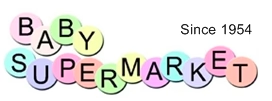Ways to Create a Smooth Transition From Breastfeeding to Bottle Feeding
Whether you're planning to return to work after having a baby or you simply want to be able to leave the house for a few hours and let someone else handle feedings in your absence, transitioning to bottle feeding can add convenience to your life after bringing home baby. It is generally recommended that you wait until your baby is at least a month old to begin adding bottles to the mix, and you should allow at least two weeks for your baby to acclimate before you fully transition.
Babies that are use to breastfeeding may not be keen to give up the food source they're familiar with, but there are steps you can take to make the transition easier. Here are a few tips to create a smooth and seamless transition.
Start with Breastmilk
Even if you're unable to breastfeed your baby, you can still offer breastmilk by pumping and storing your milk for use when you're away. This will help to make the transition easier, as opposed to using formula for bottle feeding, and it will ensure your infant still receives the healthiest and most beneficial source of nutrition.
Taper Off
Going cold turkey should be reserved for giving up bad habits. Since your baby is transitioning from one good thing to another, you can afford to take your time.
Start by offering your baby some breastmilk in a bottle before bedtime, just to establish familiarity. From there you can try using a bottle for one regular feeding a day and increase the frequency over time until your infant is just as comfortable with the bottle as the breast.
Use the Right Products
Many standard bottles are not designed for an infant, and most feel different from a breast and require your baby to feed in a different way. For this reason, finding the right transitional products can be a real challenge.
MimiJumi bottles are one great product to consider - they are not only BPA-free, but they are also designed to feel and function like a real breast and nipple, making it easier for babies to transition. They feature a tilted top for easier feeding and they're designed to prevent air intake that can contribute to colic.
Comotomo bottles are another option, with a wide-mouth design and anti-colic vents that make adapting easier for both newborns and older babies.
Consider Separation during Feeding
Babies used to breastfeeding may not be too happy about having to learn another method, especially when their preferred method of feeding is so nearby. For this reason, you may want to remove yourself from the equation, just to begin with.Having your partner, another family member, or someone else your baby is familiar with handle the first few bottle feedings might provide a more successful introduction to this alternative form of feeding. Once your baby seems comfortable with the bottle, you can take over.
